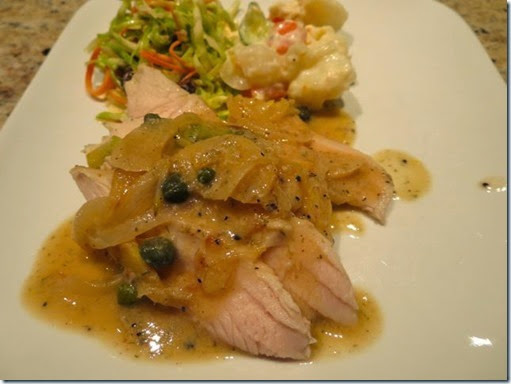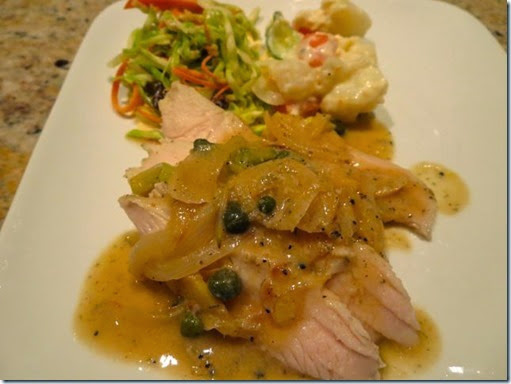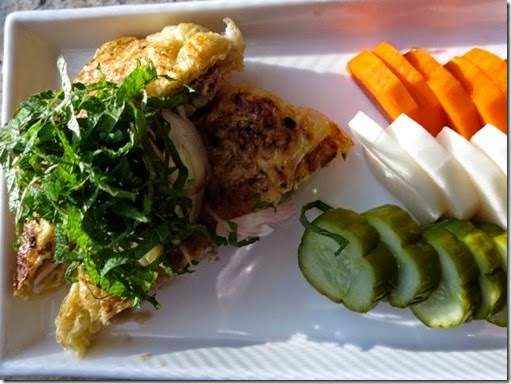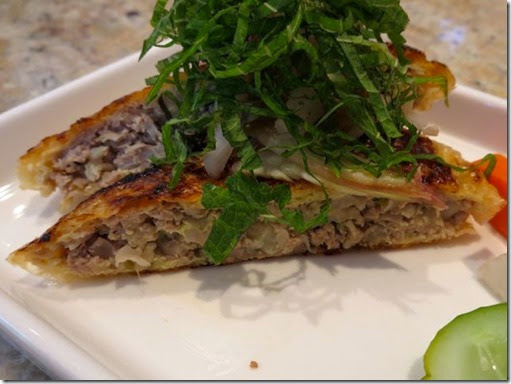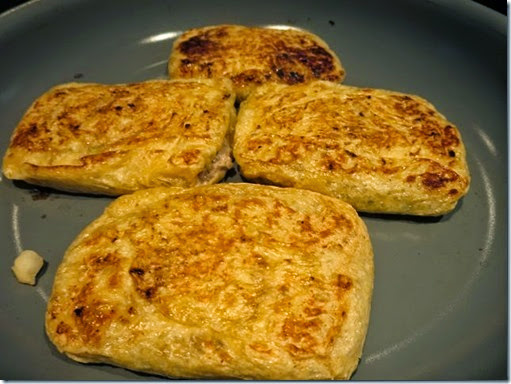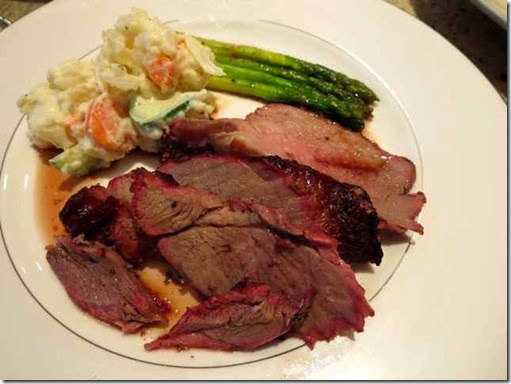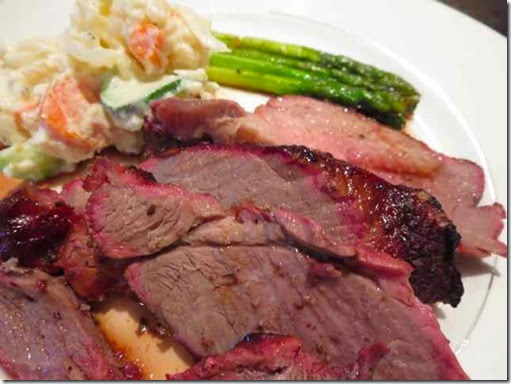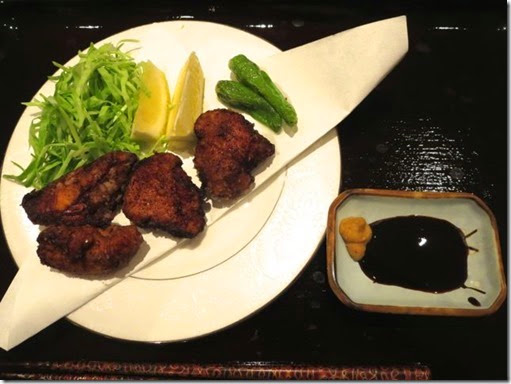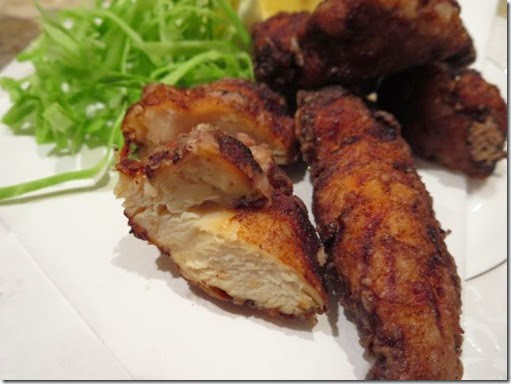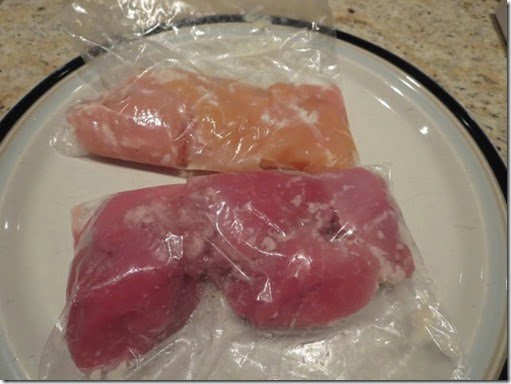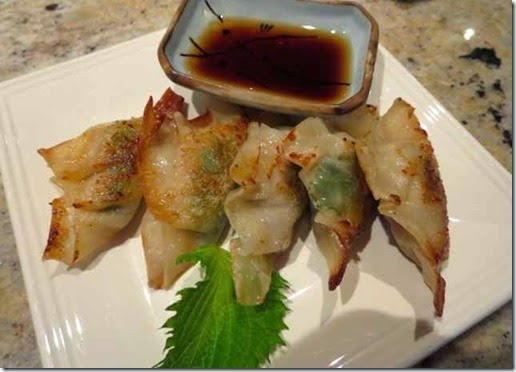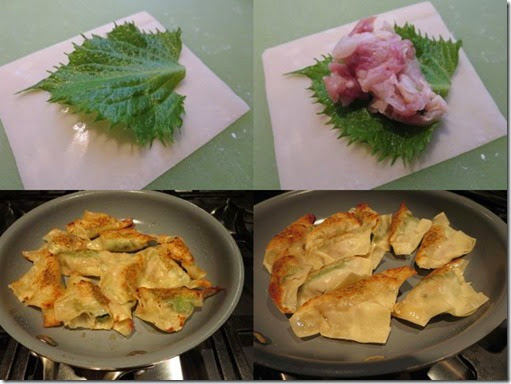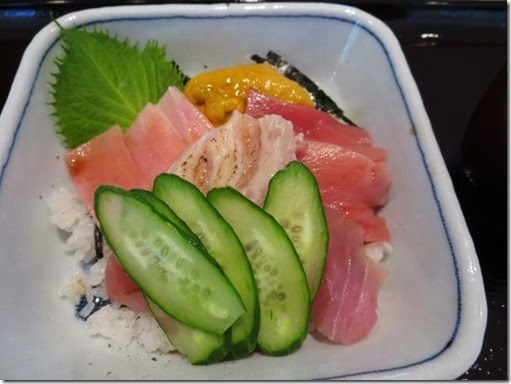In the past, my wife made
cottage cheese and
cheese curd (which went into an Indian spinach curry, saag paneer) which we posted before. This is an improved version of the cheese curd. The improved version was excellent and better than
the previous version so I decided to post it again. I served the cheese with my mildly spicy marinara sauce which I had made for
pizza the previous weekend. I also added some good fruity olive oil, smoked sea salt and garnished with fresh basil.
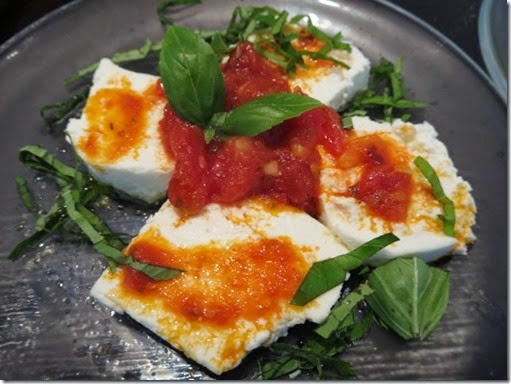
Here is another version with the marinara sauce, olive oil, and oil-cured black olive a few days later.
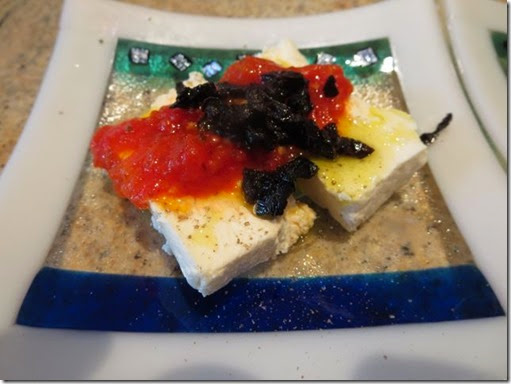
This improvement was a continuing work in progress with several stumbles along the way. Suffice it to say that success depended on the combination of the right ingredients and the proper tools. The improvement my wife made to the ingredients was the use of high-octane (4% instead of 1%) whole milk as well as high-octane buttermilk (
Harrisburg Dairies whole buttermilk from Whole foods). The buttermilk was almost as thick as yogurt. The proper tools consisted of improved cheese cloth and a heavy duty stock pot to boil the milk without scorching. She got the new cheese cloth (from
the New England Cheesemaking Supply Company). This cloth is called butter muslin and is used for draining curds for soft cheese. This cloth is much sturdier than the cheesecloth sold in grocery stores. It has a very fine mesh which captures all the curds instead of letting half of them do down the drain (which is exactly what happened on one of our first attempts). But, by far the most expensive investment, was the purchase of a new stainless steel stock pot (All-clad) for boiling the milk. In one of her attempts to make cheese, my wife used a porcelain-lined metal stock pot which I had used to cook wort for making beer many years ago. Although she stirred continuously, when the milk came to a boil, the bottom had heavily and totally scorched. The resulting curd tasted burnt. It was terrible. We had to discard it. It also took considerable scrubbing to save the old stock pot. I had wanted to get a new stock pot for some time so I thought this was a good excuse to make the investment. I do have to say that to date this is the most expensive cheese curd EVER.
Ingredients:
Whole milk (4%) 1 gallon
Buttermilk 4 cups,
4 tsp. salt
My wife brought 1 gallon of whole milk to a boil in her shiny new stock pot (no scorching this time). She then added the buttermilk, stirred and let it sit for a few minutes. Then, she poured the milk through the new cheesecloth over the colander. After 5 minutes or so, most of the water (whey) drained away and the cheese curd remained (see below). With this new cheesecloth, no curd was sacrificed to the sink god!
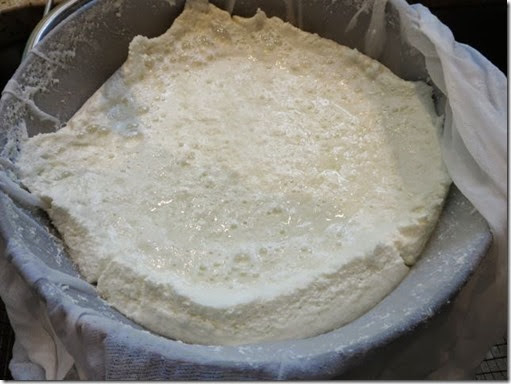
She wrapped the curd in the cheesecloth. Since we do not have a cheese press (yet), we used a
Japanese pickles pot (this one is square with a spring loaded pressure board which can be further lowered by turning). She placed the wrapped curd into this contraption and pressed it by turning the knob. She kept it in the refrigerator for several hours. More whey came out. She discarded this and pressed it again. The next day, the cheese curd was soft but hard enough to be cut into appropriate sized pieces.
The texture was very creamy and the taste was slightly sweet. It had the texture of good cream cheese and a taste reminiscent of Mozzarella cheese. Besides enjoying the cheese curd itself as a drinking snack such as the ones shown above we used this in an
Indian-style spinach curry which was also very good. Since the stockpot investment, my wife will have to make quite few batches of cheese (and possibly expand her repertoire) to reduce unit costs. (Meanwhile, I hope to enjoy the stockpot for my cooking projects “free of cost”).
